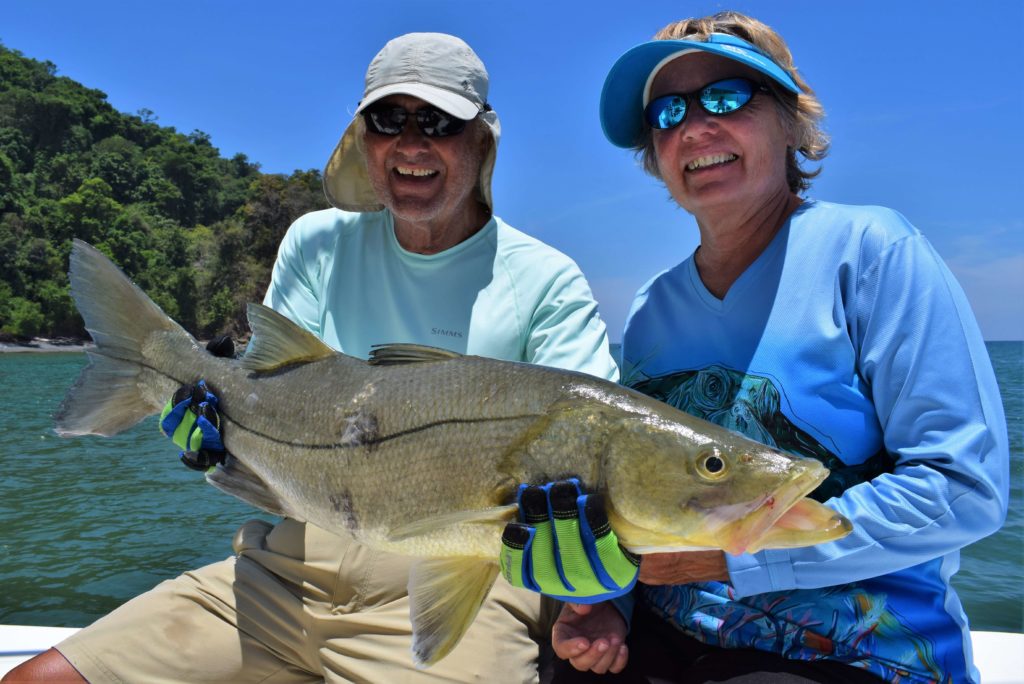Introduction:
Hooking a snook with light tackle is a thrilling fishing adventure that you won’t want to miss. anglers from all over the world search for the elusive 40″ snook. one of the strongest fighitng fish to ever thump your line. Once you get your first snook it will leave you wanting nothing more than another snook!
Getting to Know Snook: Snook are unique saltwater fish, part of the Centropomidae family, with 12 recognized species, five of which live in U.S. waters. The Common Snook, also known as the Robalo or Sergeant Fish, is the largest and most sought-after by anglers.
Distinctive Look: Snook have a sleek body with a pointed head and yellow-tinted fins. All snook share a striking black stripe running along their sides.
Sizes Vary: On average, snook measure around 1.5 feet and weigh 5-10 pounds, but they can grow over 4 feet and exceed 50 pounds.
Records and Noteworthy Catches: In 1978, Gilbert Ponzi set a world record by catching a Common Snook weighing 53 pounds, 10 ounces. More recently, a Pacific Snook weighing 60 pounds was caught in March 2014.
Best Fishing Spots: Snook prefer areas like docks, sea walls, bridges, and jetties, accessible by both boat and foot. Prime locations include inlets and passes, especially John’s Pass and Clearwater Pass, where fast-flowing water attracts them. They are rarely found in waters deeper than 60 feet. May and June are peak months for Gulf Coast snook fishing, with nighttime being the most productive, especially during a full moon.
Optimal Times and Techniques: Sport Fishing Magazine recommends using chartreuse plugs and topwater baits in summer when snook are most active. In fall and winter, smaller lures at slower speeds work best. Natural baits like a lively 4- to 5-inch greenie (threadfin herring) or jumbo shrimp are also effective.
What Snook Love to Eat: Snook are versatile eaters, consuming shrimp, baitfish, crustaceans, and even other fish. Top lure choices include top-water baits, spoons, jigs, live bait, and flies.
Temperature Preferences: Snook can’t handle cold water; they become lethargic below 65°F and start dying at 60°F. The cold snap in Florida in January 2010 resulted in a significant loss of the snook population.
Adaptable to Salt Levels: Snook can tolerate a range of salinity levels, with younger fish preferring less salty waters near estuaries.
Lifespan Insights: Females live around 21 years, while males typically live about 15 years.
Delicious on the Plate: Snook meat, white with medium firmness, is a culinary delight. It’s not as delicate as trout but not as dense as swordfish. Removing the skin, often called the “soap fish,” is recommended. After filleting, seasoning, or marinating, a stint in the fridge completes the preparation, offering a tasty treat for your palate.
In Conclusion:
The snook is a fish that can’t be beaten by any fish that comes to mind for me. Catching snook requires a combination of knowledge, skill, and patience. By understanding snook behavior, choosing the right tackle, and practicing effective techniques, you can increase your success rate and enjoy the excitement of landing these elusive fish from the shoreline.

















